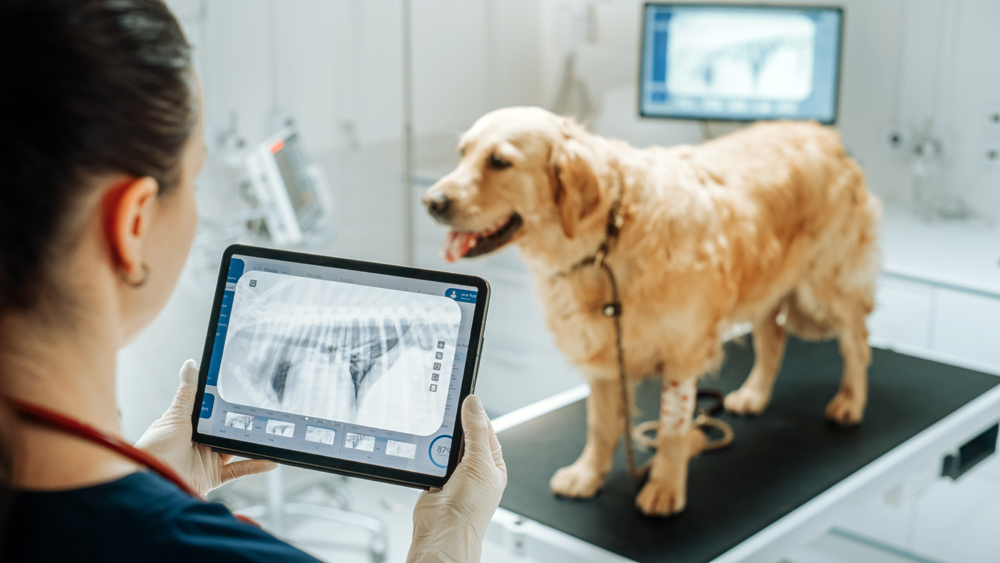Veterinary medicine has entered a new era shaped by rapid advancements in science and technology. As pets are increasingly regarded as beloved members of the family, owners and veterinarians alike demand sophisticated tools and methods to ensure optimal health care. Innovations once reserved for human medicine have steadily migrated into veterinary practice, transforming diagnosis, treatment, and preventative care. From advanced imaging and genetic testing to wearable technology and artificial intelligence, the landscape of veterinary medicine technology is more dynamic than ever. The latest news in this field demonstrates not only how far veterinary science has come but also the extraordinary possibilities on the horizon for companion animal health.
Advances in Diagnostic Imaging
Diagnostic imaging has always been a critical tool for veterinarians, but recent technological advances have made it more powerful and accessible. Where x-rays once formed the foundation of imaging, digital radiography has now become the norm, offering faster results, clearer images, and reduced radiation exposure. Ultrasound technology has also improved significantly, with portable machines allowing veterinarians to perform advanced diagnostics even in smaller clinics or in the field. Beyond these tools, computed tomography (CT) scans and magnetic resonance imaging (MRI), once limited to specialized hospitals, are now more widely available. These advanced modalities provide unparalleled detail of soft tissue, joints, and internal organs, enabling earlier detection of conditions such as tumors, orthopedic injuries, and neurological disorders. The integration of three-dimensional imaging is another emerging trend, allowing for more precise surgical planning and improved communication with pet owners who can now visualize their animal’s condition in detail.
Breakthroughs in Laboratory Diagnostics
Laboratory diagnostics have undergone a revolution, driven by point-of-care testing and molecular technologies. Modern veterinary practices can now perform in-house bloodwork, urinalysis, and infectious disease testing with results available in minutes. This rapid turnaround is crucial in emergencies where every second matters, but it is equally valuable in routine wellness visits where preventative screening can identify issues before they become critical. Polymerase chain reaction (PCR) testing, once confined to research labs, has become commonplace, enabling veterinarians to identify specific pathogens with extraordinary accuracy. This is particularly important in detecting zoonotic diseases, protecting both animals and the humans who care for them. Advances in biochemistry panels and biomarkers also allow veterinarians to monitor organ function, hormonal balance, and even early markers of cancer. With these tools, veterinarians are empowered to make faster, more informed decisions that can dramatically improve outcomes.
The Role of Telemedicine in Modern Veterinary Care
Telemedicine has rapidly become an integral part of veterinary care, spurred initially by the global pandemic and now sustained by ongoing demand. Virtual consultations allow veterinarians to extend their reach, providing care for clients in rural areas, offering second opinions, and maintaining continuity of care when in-person visits are not possible. For preventative care, telemedicine enables veterinarians to guide owners on nutrition, training, and wellness practices without requiring travel. Remote monitoring devices complement telemedicine, allowing veterinarians to track chronic conditions such as diabetes or heart disease from afar. This blend of convenience and oversight reduces barriers to care, ensures that pets are monitored consistently, and strengthens the relationship between veterinarians and pet owners. While telemedicine cannot replace in-person exams entirely, it has carved out an indispensable role in modern veterinary technology.
Wearable Technology for Pets
Wearable technology has extended beyond human fitness trackers and entered the world of companion animals with remarkable impact. Collars and harnesses now exist that monitor activity levels, heart rate, respiratory rate, and even sleep patterns. These devices generate continuous data, offering veterinarians a more complete picture of an animal’s health and behavior. Subtle changes detected through wearables can indicate the early onset of arthritis, cardiac conditions, or stress-related behaviors. In some cases, the data can also be shared directly with veterinary clinics, integrating into medical records for ongoing analysis. This continuous monitoring provides a proactive approach to health care, allowing interventions before symptoms become obvious to the owner. For working dogs, such as service animals and law enforcement K9s, wearable technology is proving invaluable in safeguarding their well-being during demanding tasks.
Artificial Intelligence in Veterinary Medicine
Artificial intelligence (AI) is beginning to reshape veterinary medicine in much the same way it is transforming human health care. Machine learning algorithms can analyze large volumes of diagnostic data, detecting patterns that may be missed by the human eye. AI-powered imaging tools can assist veterinarians in identifying abnormalities in x-rays, ultrasounds, and CT scans with remarkable accuracy. Predictive analytics also hold promise, using data from wearables, laboratory results, and medical histories to forecast potential health risks. For example, AI could help predict which animals are most likely to develop diabetes or arthritis, enabling preventative interventions. Beyond diagnostics, AI is also being used to streamline practice management, optimizing appointment scheduling, inventory control, and client communications. While still in its early stages, AI promises to enhance accuracy, efficiency, and outcomes across the veterinary profession.
Genetic Testing and Personalized Medicine
Genetic testing has become one of the most exciting advancements in veterinary medicine, offering insights into breed composition, hereditary diseases, and predispositions to health conditions. Affordable testing kits allow veterinarians and owners to identify risks for diseases such as hip dysplasia, heart disease, or certain cancers. Armed with this information, veterinarians can recommend lifestyle adjustments, monitoring protocols, or early interventions tailored to the individual animal. This shift toward personalized medicine mirrors trends in human health care, emphasizing prevention and customization rather than one-size-fits-all approaches. In breeding programs, genetic testing has become invaluable, reducing the incidence of inherited disorders and improving overall breed health. As research expands, the potential for genetic therapies to correct or mitigate hereditary conditions represents a groundbreaking frontier in companion animal care.
Robotics and Advanced Surgical Tools
Surgery has long been a vital component of veterinary care, and technology is taking it to new levels. Robotic-assisted surgery, while still rare in veterinary practice, is beginning to make its mark. These systems allow for greater precision, smaller incisions, and reduced recovery times. Minimally invasive techniques such as laparoscopy and arthroscopy are becoming increasingly common, offering less painful alternatives to traditional surgery. Advanced surgical tools, including laser and electrosurgical devices, further improve outcomes by reducing bleeding, minimizing infection risk, and accelerating healing. Innovations in anesthesia monitoring and pain management ensure that surgical procedures are safer and more comfortable for pets. As costs decrease and access expands, advanced surgical technologies will likely become more widespread in veterinary practices.
Regenerative Medicine and Stem Cell Therapy
Regenerative medicine is another exciting area of veterinary technology. Stem cell therapy and platelet-rich plasma (PRP) treatments are being used to promote healing in orthopedic injuries, arthritis, and degenerative conditions. These therapies harness the body’s own healing mechanisms to repair damaged tissues, reduce inflammation, and restore function. While initially experimental, regenerative medicine is gaining credibility as research and clinical results demonstrate its effectiveness. For pets suffering from chronic pain or limited mobility, these treatments can significantly improve quality of life. The potential for regenerative medicine extends beyond orthopedics, with ongoing research exploring applications in cardiac, neurological, and dermatological conditions. This field represents one of the most promising frontiers in veterinary technology, offering hope for conditions once considered untreatable.
Advances in Oncology and Chronic Disease Care
Cancer remains a major challenge in companion animal health, but technology is providing new tools for detection and treatment. Advanced imaging and molecular diagnostics enable earlier diagnosis, while targeted therapies and immunotherapies offer more precise and effective treatment options. Chemotherapy protocols are being refined to minimize side effects, ensuring that pets tolerate treatment better. Radiation therapy, once limited to specialized facilities, is becoming more widely available with newer, more compact machines. Beyond oncology, technology is also transforming the management of chronic diseases. Continuous glucose monitors for diabetic pets provide real-time data, while improved renal diets and medications are extending the lives of animals with kidney disease. These advancements demonstrate a shift toward more sophisticated and compassionate care for long-term health conditions.
Data Integration and Veterinary Practice Management
The increasing flow of data from diagnostics, wearables, and client communications has necessitated improvements in veterinary practice management systems. Cloud-based platforms now allow for seamless integration of medical records, test results, and imaging, accessible from any location. These systems enhance collaboration among specialists and primary care veterinarians, ensuring continuity of care. They also streamline communication with pet owners, who can access health records, appointment reminders, and educational resources through mobile apps. Data analytics built into these platforms can identify trends in patient populations, informing preventative care strategies and resource allocation. The result is a more efficient, organized, and client-friendly veterinary experience.
The Future of Veterinary Medicine Technology
The trajectory of veterinary medicine technology points toward an increasingly interconnected and personalized future. Advances in biotechnology may soon yield vaccines against cancers, microbiome therapies to prevent gastrointestinal and immune disorders, and precision medications tailored to genetic profiles. Artificial intelligence will likely become more deeply embedded in diagnostics, offering predictive insights that revolutionize preventative care. Wearables will become smaller, more accurate, and more widely adopted, ensuring that veterinarians have constant streams of health data. Telemedicine platforms will expand, integrating virtual reality for remote exams and consultations. Ultimately, these technologies will converge to create a veterinary ecosystem that prioritizes prevention, personalization, and proactive wellness. The line between human and veterinary medicine will continue to blur as innovations cross disciplines, ensuring that pets benefit from the same technological revolutions that are transforming human health care.

